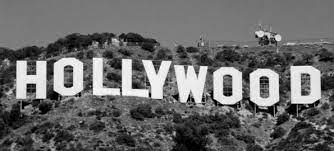Classical Hollywood cinema is a phrase used in film theory to characterise a narrative as well as visual form of filmmaking that grew popular in the United States here between 1910s as well as the 1960s. It eventually become the most powerful and prevalent movie technique on the planet. Classic Hollywood storey, the Golden Age of Hollywood, Old Hollywood, as well as classical continuity are all words that are similar or related.
The theatre was just for centuries the sole visual standard of narrative storytelling art. Ever since mid-late 1890s, when the first storytelling movies were released, filmmakers have attempted to reproduce the impact of live theatre on the big screen.
Many of these filmmakers began their careers as stage directors inside the late 1800s, and also most movie performers began their careers in vaudeville or theatre melodramas. Early narrative movies borrowed little from theatre in terms of visuals, and their stories borrowed almost nothing from vaudeville and melodrama in terms of plot. Scenes were filmed in full shot as well as meticulously orchestrated staging to depict storey and character interactions before the visual style that would became known as “classical continuity.” Cutting was extremely restricted, consisting largely of close-ups of lettering on items for readability purposes.
Silent film’s development (1913–late 1920s)
Film allows the ability to control apparent time or space, and so to create the sense of realism – that is, chronological linearity and spatial continuity – although missing the actuality inherent inside the stage. Filmmaking was coming to recognize its aesthetic potential by the early 1910s. This time would subsequently be described as a “Golden Age” of cinema in Sweden and Denmark; in America, this creative shift is credited to filmmakers like D. W. Griffith finally pulling the Edison Trust’s grasp and producing pictures independent of the manufacturing monopoly. Movies all across the world started to use aesthetic as well as narrative aspects that were common in classic Hollywood movies.
In 1913, pioneering directors from numerous nations made masterpieces like The Mothering Heart, Ingeborg Holm (Victor Sjöström), and L’enfant de Paris (Léonce Perret), all of which set new standards for cinema as a method of storytelling. That was also the year that Yevgeni Bauer, the first real cinema artist, began his brief but fruitful career, as per Georges Sadoul.
Griffith had an unrivalled impact on filmmaking across the world, as well as particularly in America. His performers were equally significant in adjusting their performances towards the new medium.
Lillian Gish, the star of The Mothering Heart, has had a significant impact on movie acting approaches. The Birth of a Nation, a masterpiece of literary narrative combining various creative visual methods, was a ground-breaking movie for cinema as a way of storytelling in 1915. The picture ushered in so many changes in American cinema that it became obsolete within only a few years. Though 1913 was indeed a watershed moment for filmmaking worldwide, 1917 was predominantly a domestic one; the era of “classical Hollywood cinema” is defined by a narrative as well as visual style that began to rule the movie medium in America by 1917.
After the changeover to sound-film production, the narrative as well as visual style of classic Hollywood style grew even further. With apex of the studio system, the movie industry alone brought about the most significant developments in American filmmaking. This form of production, including its dominant star system pushed by a number of major studios, was several years ahead of sound. Most major American directors as well as performers, who’d already worked independently ever since early 1910s, would have to join the new studio structure by mid-1920 in order to continue working.
The beginning of both the sound era is difficult to pinpoint.
Also Read: What is Hollywood Foreign Press Association all about?

